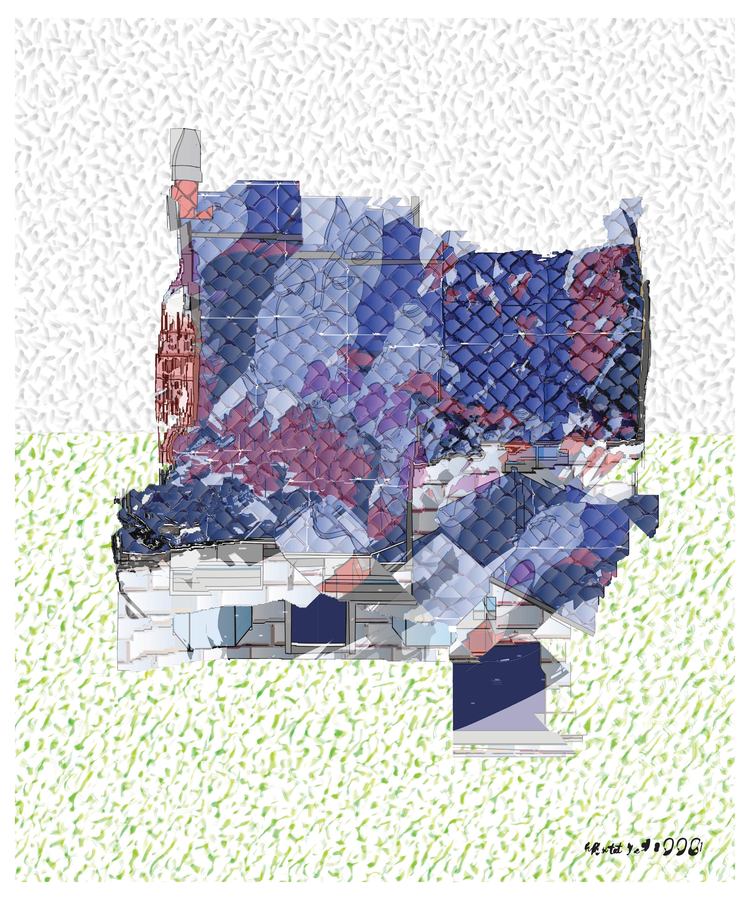Everyverything: In Defense of the Inbetweener
Exhibited at the Southern California Institute of Architecture (SCI-Arc)
"Thus the unfacts, did we possess them, are too imprecisely
few to warrant our certitude, the evidencegivers by legpoll too
untrustworthily irreperible where his adjugers are semmingly
freak threes but his judicandees plainly minus twos."
-James Joyce, Finnegans Wake
Everyverything, every-vrything, evryvry-thing, e-ve-ry-ve-ry-thing.
Some say that things long to persist in their being: the stone eternally wants to be a stone, and the tiger a tiger. One could halt their imagination to say that things are what they are, and nothing else. Stones are stones; tigers are tigers.
But, if the desire is instead for the desire of the Other, then it turns out that what can be read through everything is EVERYVERYTHING, and suddenly we’re not burdened by the frictions of reality. The forms that support this translation can be called inbetweeners, and their character is determined by which elements of one are read against those of the other.
A house, for instance, is ten walls, twenty windows, three roof pitches, two floors, thirteen steps and treads, and one chimney. The image of a cat is one face, one nose, two ears, one mouth, one body, one tail, and one scarf.
All the obvious comparisons are drawn here. Of course, the windows are eyes (though most of them disappear), the front door is a mouth, and the door jamb a nose. The walls are the body and legs, the roof is the cat’s ears, bottom, and scarf. The house’s chimney is the cat’s tail. And just as Douglas Graf read a Palazzo into the Villa Savoye by pulling it back mercilessly, so too does a house start to resemble a cat.
The inbetweeners of a house and a cat cannot be called houses or cats themselves, but rather, they can be referred to as cases, couses, chouses, chases, cses, caes, cates, houts, housets, housats, housts, hcats, houscats, houats, houcats, and many other names difficult to pronounce.
And what happens when one tries to trap and observe an inbetweener? Just like its pact with the rest of them, it, too, is elusive. Its chimntail appears to miscalculate its step; its eyendows become many and back to one, its shingles work hard to keep up to speed. Its hroof pitches pierce each other and revisit wounds, and its ground rips from an earth only to later reattach. In themselves, inbetweeners are constructed of lines which escape geometry by a fugitive mobility; single frames of action which must be read contingently.
This is not necessarily a demonstration of how to design five thousand objects, nor a single morphing one. In fact, most of the inbetweeners presented here are only images or phantasms at best, and they are softer than the software used to produce them. This is instead about conjuring architecture as an alchemical image or an unglued atomic structure. This is about producing architecture as an alternative to counting sheep. This is about replacing plane geometry with architecture that is fleeting, innumerable, incalculable, plural, disposable, transient, infinitesimal, and often imperceptible. Fiction may be a term borrowed from literature, but architecture’s only chance for survival might be to borrow without apology.
The inbetweeners are in-beee-tween every single thing, and they are perpetually becoming…







